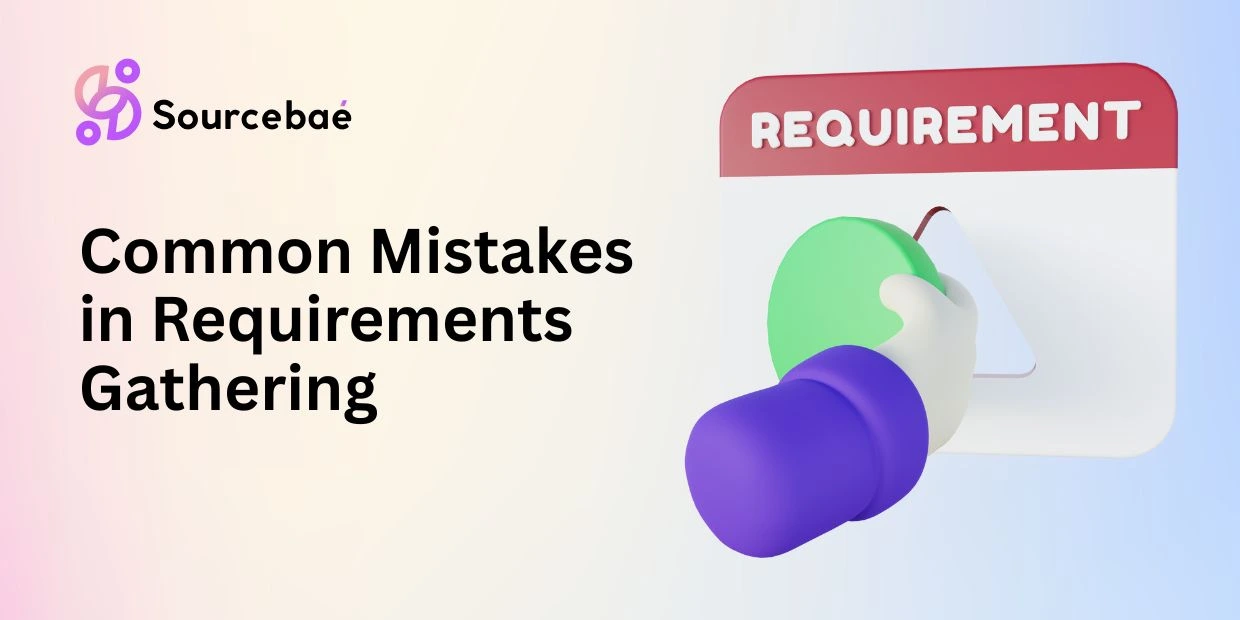Requirements gathering forms the foundation of any successful project. It’s the process of collecting and documenting the needs and expectations of stakeholders.
However, despite its importance, requirements gathering is often fraught with challenges that can lead to project delays, budget overruns, and unsatisfactory outcomes.
In this article, we’ll explore the common mistakes in requirements gathering and provide insights on how to avoid them, ensuring a streamlined project development process.
Common Mistakes in Requirements Gathering
Requirements gathering is a critical phase in project management, and avoiding these common mistakes can significantly contribute to successful project outcomes:
Neglecting Stakeholder Involvement
Gathering requirements without involving key stakeholders is a recipe for disaster. Stakeholders bring unique insights and perspectives that shape the project’s direction. Their absence can lead to misunderstood expectations and unmet needs.
Poorly Defined Objectives
Unclear project objectives make it challenging to gather relevant requirements. Without a clear sense of purpose, the gathered requirements might lack focus and coherence, derailing the project from its intended path.
Overlooking Non-Functional Requirements
Focusing solely on functional requirements while neglecting non-functional ones (such as performance, security, and scalability) can lead to a product that meets functional needs but fails to meet critical quality standards.
Lack of Clear Communication
Effective communication is paramount in requirements gathering. Miscommunication can lead to misinterpreted requirements, resulting in a product that doesn’t align with stakeholders’ expectations.
Not Prioritizing Requirements
Failure to prioritize requirements can lead to scope creep, where new requirements are continually added without considering their impact on project timelines and resources.
Insufficient Research
Inadequate research about the project domain can result in requirements that are incomplete or unrealistic. Thorough research ensures a comprehensive understanding of the project context.
Ignoring End-User Input
End-users provide valuable insights into the practicality and usability of a product. Ignoring their input can lead to a final product that doesn’t resonate with the intended audience.
Lack of Documentation
Proper documentation is essential for maintaining a clear record of requirements. Without adequate documentation, requirements can be easily forgotten or misinterpreted.
Not Validating Requirements
Failing to validate requirements with stakeholders can lead to misunderstandings and discrepancies down the line. Regular validation ensures that everyone is on the same page.
Rigid Adherence to Initial Requirements
Projects evolve, and requirements may need adjustments along the way. Being overly rigid in adhering to initial requirements can hinder adaptation to changing circumstances.
CHECK OUT: Common Mistakes in Client Communication
Tips to Avoid These Mistakes:
- Involve Stakeholders from the Start: Engage stakeholders at the beginning of the requirements gathering process to ensure their needs are captured accurately.
- Define Clear Objectives: Clearly define project objectives to guide the requirements gathering process effectively.
- Balance Functional and Non-Functional: Give equal importance to both functional and non-functional requirements for a well-rounded product.
- Communicate Effectively: Maintain open and clear communication channels to prevent misunderstandings.
- Prioritize Wisely: Prioritize requirements based on their impact and feasibility to prevent scope creep.
- Conduct Thorough Research: Invest time in understanding the project domain to gather comprehensive requirements.
- Include End-User Feedback: Incorporate end-user feedback to ensure the final product meets practical needs.
- Document Extensively: Document requirements meticulously to have a reliable reference throughout the project.
- Validate Continuously: Regularly validate requirements with stakeholders to avoid discrepancies.
- Adapt to Changes: Be flexible and willing to adapt requirements as the project progresses.
Frequently Asked Questions (FAQs):
Q: Can requirements gathering be skipped in small projects?
A: No, even in small projects, requirements gathering is essential to ensure alignment and project success.
Q: How can I involve remote stakeholders in the process?
A: Leverage virtual meetings, collaboration tools, and clear documentation to engage remote stakeholders effectively.
Q: What’s the biggest risk of not validating requirements?
A: Not validating requirements can lead to building a product that doesn’t meet stakeholders’ needs, causing costly revisions later.
Q: Is it possible to gather too many requirements?
A: Yes, excessive requirements can lead to confusion and extended project timelines. Focus on quality over quantity.
Q: How often should I revisit and adjust requirements?
A: Regularly review and adjust requirements based on project progress and changing circumstances.
Q: What role does a business analyst play in requirements gathering?
A: A business analyst facilitates the requirements gathering process by liaising between stakeholders and development teams.
Conclusion:
Effective requirements gathering is the cornerstone of successful project delivery. By avoiding the common mistakes outlined in this article and following the recommended tips, project managers, business analysts, and stakeholders can collaborate to create products that meet expectations, stay within scope, and contribute to overall project success.






